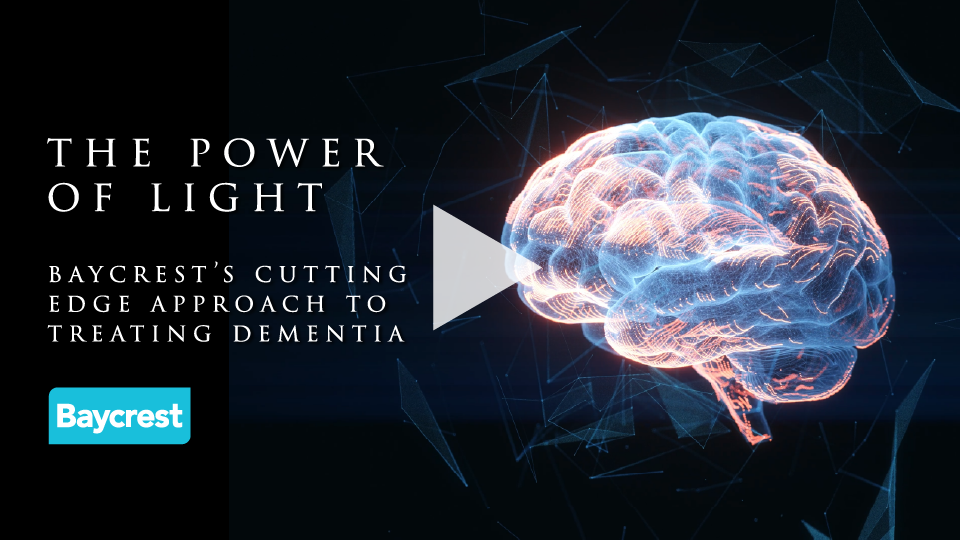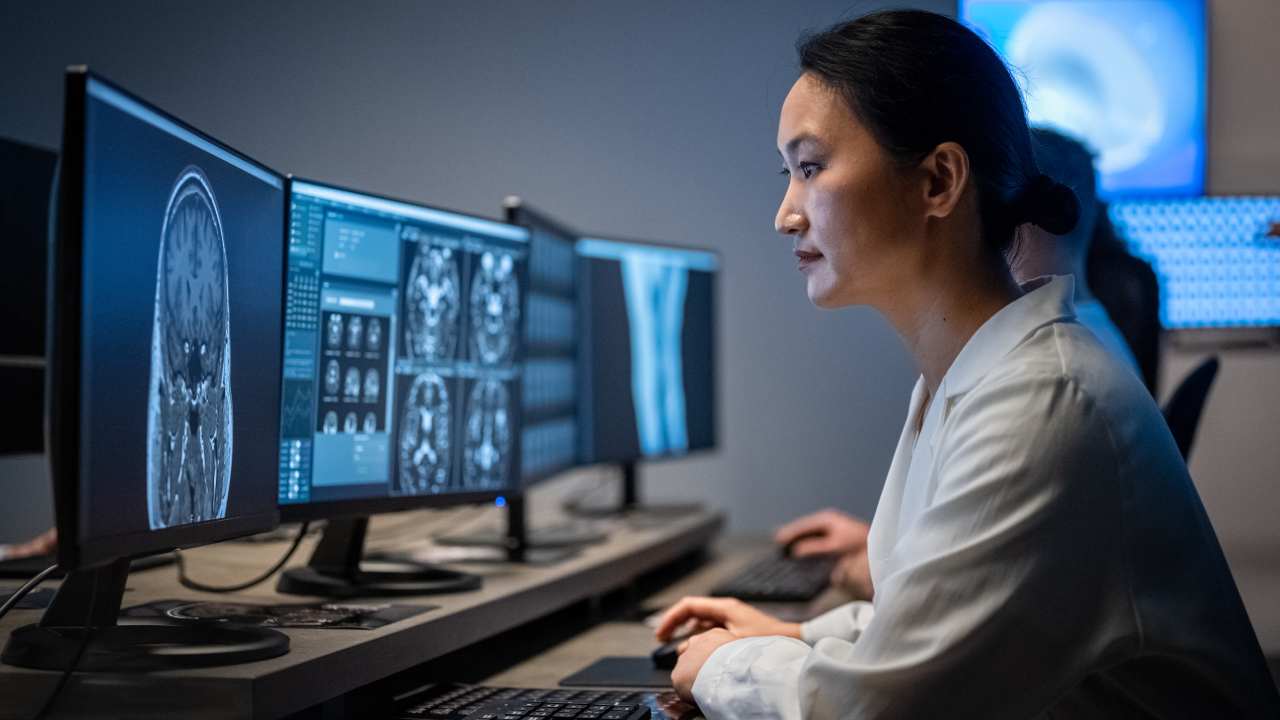See the cutting-edge approach to treating dementia

The Challenge: Dementia in Canada
The population of patients with Alzheimer’s and other dementias in Canada is projected to rise by 65% by 2030, placing an immense burden on the healthcare system. Beyond the economic impact, this surge presents significant emotional and physical challenges for caregivers, underscoring the urgent need for innovative solutions. Light therapy is a promising new solution.
A Groundbreaking Solution: Neuromodulation
Neuromodulation is emerging as a revolutionary method for brain therapy. This approach involves the targeted stimulation of the brain using electric fields, magnetic fields, or even light. By directly influencing neuronal health and brain activity, neuromodulation seeks to enhance brain function holistically.
At Baycrest, researchers are exploring the effects of low-level light therapy (LLLT) on the brain. Their objective is to develop a customizable and personalized form of therapy to address diseases like Alzheimer’s and other dementias.
The Promise of Personalized Light Therapy
The potential benefits of personalized light therapy are immense:
Baycrest’s research aims to create a suite of therapeutic solutions that could transform the way dementia is managed globally.
What is Light Therapy?
Light therapy involves the application of near-infrared (NIR) or red laser or LED light directly onto the skin or through the nose. The light penetrates the skin and skull to the brain, where it interacts with brain cells to rejuvenate their function.
How it works:
What Sets Baycrest Apart?
Baycrest’s initiative stands out due to its multidisciplinary approach:
The Team’s Expertise:
- Engineers and physicists with industry experience in bio-optics.
- Biophysicists to decode the science behind light interactions in the brain with greater precision than ever achieved
Future Prospects of Light Therapy
The pipeline for this groundbreaking technology has been laid. Baycrest has completed the initial stage of research and is gearing up to test the therapy on older adults with cognitive complaints and dementia patients.
Goals for the Next Three Years:
FAQs: Light Therapy for Alzheimer’s and other Dementias
1. How does light therapy help Alzheimer’s patients?
Light therapy energizes brain cells by stimulating their mitochondria, helping them repair damage, and boosts blood flow to clear toxins, improving overall brain function.
2. Is light therapy safe?
Yes, light therapy is non-invasive, safe and designed to be safe for at-home use. Clinical studies are underway to ensure its efficacy.
3. Can light therapy reverse dementia?
While it may not reverse dementia, light therapy has shown potential to slow cognitive decline and restore some brain functions.
4. How long does it take to see results?
Results vary, but consistent use of light therapy devices over time may yield noticeable improvements in cognitive health. Also, customizing the dose on an individual level can maximize positive results.
5. What makes Baycrest’s approach unique?
Baycrest combines engineering innovation, global collaboration, and advanced imaging to develop a precision-driven and personalized light therapy solution.
6. When will light therapy be available to the public?
Baycrest aims to help bring Health Canada-approved treatment solutions (including devices and clinical training) within three years, pending successful clinical trials.
A Brighter Future for Alzheimer’s Care
Baycrest’s pioneering work in personalized light therapy could revolutionize Alzheimer’s treatment. By offering a non-invasive, in-home solution, this therapy has the potential to reduce societal costs, empower patients, and preserve brain health. With clinical trials underway, the future looks promising for those affected by Alzheimer’s and other dementias.
Related Articles: Brain Matters, Research, Innovation










